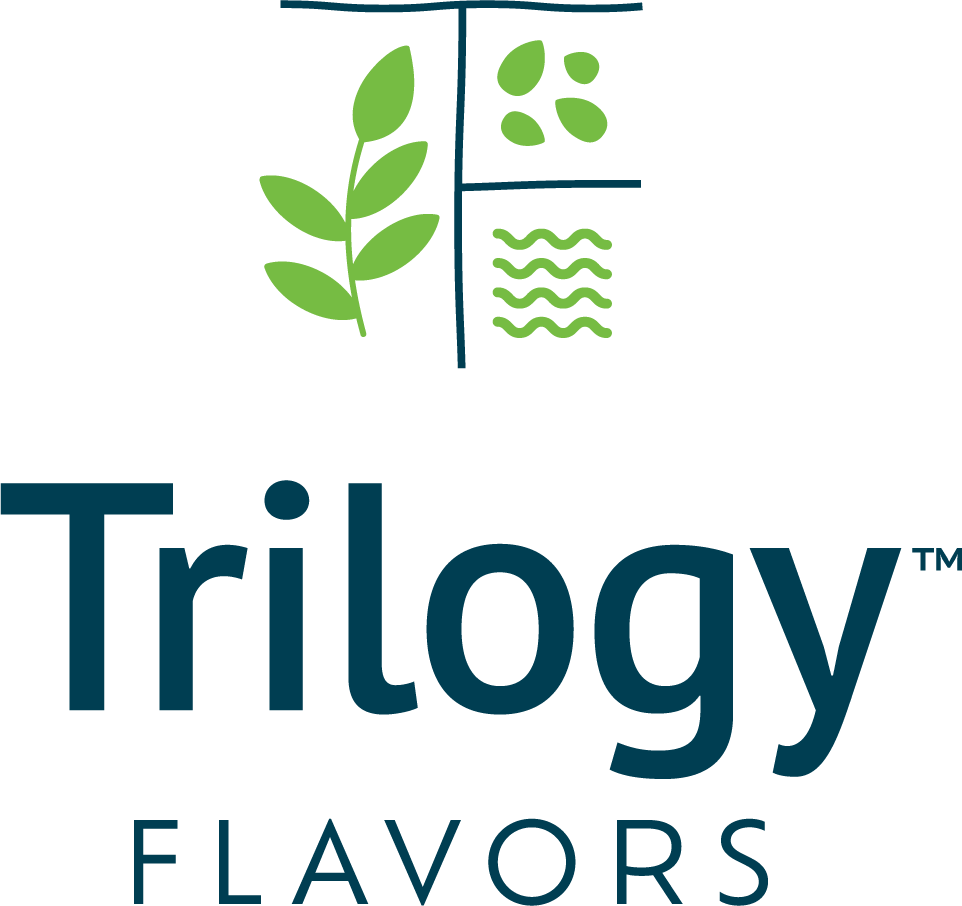DEFINING GENERATIONS
The world is full of individuals with a variety of preferences. To identify cohorts, researchers classify different groups by their ages. Each generation influences food and beverage choices. Taste, health, value, and convenience are factors in generational food preferences. As generations mature, so do their tastes and preferences. This blog post aims to characterize generational tastes and how they shape food and beverage innovation. Below is a breakdown of commonly used generations with their birth years1 and U.S. population estimates2:
- Silent Generation: Born 1928-1945, 15.1 million
- Baby Boomers: Born 1946-1964, 66.9 million
- Generation X: Born 1965-1980, 65.6 million
- Millennials, also known as Gen Y: Born 1981-1996, 74.2 million
- Generation Z: Born 1997-2012, 70.8 million
- Generation Alpha: 2011*-2024, 38.55 million3
- Generation Beta: 2025 – 20394
Spending power is a key factor that brands and marketers use when creating consumer products. For example, in 2025, Gen X’s buying power is estimated at $15.2 trillion, projected to reach $23 trillion by 2035, according to NIQ5. Gen Z is the next generation with the highest spending power, expected to grow to $12 trillion by 20306. According to DKC Analytics7, Gen Alpha has surpassed $100 billion in annual spending power. By 2029, the spending power of Gen Alpha is expected to reach $5.46 trillion, according to McCrindle8.
SILENT GENERATION – SIMPLICITY, QUALITY & VALUE
The Silent Generation is the oldest and smallest generation, many of whom grew up during the Great Depression and World War II. A Barriers to Purchase (BTP) study9 found that this generation “has a waste not, want not attitude and a demand for quality, simplicity and traditional values.” Growing up with home-cooked meals, without fast food, nostalgia is important, and familiar flavors appeal to them10. Simplicity in ingredients and flavor profiles is preferred. Accustomed to scratch cooking, the Silent Generation values fresh, local produce and is value and price conscious11. They are also inclined to use convenient, heat-and-eat meal options. Taste and smell loss is natural with aging, especially after age 60. In addition, medications, gum problems, and diseases can also impact taste and smell12. These issues should be considered when formulating food and beverages for this demographic.
The Silent Generation is accustomed to simpler times and quality products. They value food and beverages that are fresh and affordable.
BABY BOOMERS – NUTRITION & COMFORT
Like the Silent Generation, Baby Boomers grew up with home cooking and enjoy comfort foods. For example, Technomic’s research13 found that Boomers enjoy savory and cheesy flavors. They are also interested in global flavors, but tend to choose mainstream options, like Italian, Mexican, Chinese, and Thai10. However, Boomers prioritize health-conscious options14. According to Innova15, prioritizing nutrition and realness are important, and their top concerns revolve around aging, particularly memory and mental agility. They focus on foods delivering health benefits such as energy, immunity, and feeling full. They also seek foods and beverages to address health conditions such as obesity, diabetes, and cancer16. Baby Boomers are driving gut health as the most desirable approach for function and natural function, per Innova17.
Boomers seek nutrition and comfort to balance their interest in healthy lifestyles.
GEN X – TRADITIONAL WITH A TWIST & BRAND LOYAL
Generation X is often referred to as the “Forgotten Generation” and the “Sandwich Generation” because they are individuals taking care of both their children and their aging parents.18 According to a Food Institute article16, Gen X “stands out for its distinctive embrace of customized traditional food” and their “engagement with food can be characterized as traditional with a twist.” They get excited seeing new takes on familiar favorites10. Gen X “prioritizes unique and artisanal options and tries to shop for local and specialty foods that feature authentic flavors.”14 According to Technomic13, Gen X likes tangy and smoky flavors. Gen X is fueling growth in categories like craft coffee, specialty condiments, and better-for-you indulgences, according to NIQ19. Furthermore, Gen X has the highest brand loyalty rates of any generation, particularly in food, beverage, personal care, and household categories.
Like Boomers, Gen X is interested in functional foods and beverages that deliver health benefits. They tend to seek a balance between convenience and health, favoring foods that offer both nutrition and convenience14. NIQ’s data19 showed that Gen X seeks wellness and functional beverages, such as hydration and energy. They are embracing performance-led products, especially those with clean labels. Gen X is showing a growing interest in lighter beverage alternatives. 32% of Gen X respondents choose non-alcoholic options, including mocktails and non-alcoholic beer or wine, according to Suzy’s survey20.
NIQ21 suggests that Gen X should not be overlooked because of their spending power and brand loyalty. In the next five years (2025-2030), Gen X is projected to increase spending across three key categories:
- Food & Non-alcoholic Beverages (+$507 billion)
- Beauty (+$80 billion)
- Beverage Alcohol (+$42 billion)
Gen X gravitates towards traditional food with a twist, often customizable. They seek a balance between convenience and better-for-you products. Of all generations, this demographic is the most brand loyal and an ideal target audience for brands that address their needs.
MILLENNIAL/GEN Y – HEALTH-CONSCIOUS & SUSTAINABLE
Currently, Millennials, also known as Generation Y, are the largest generation. Millennials are described as adventurous, health-conscious, and open to new cuisines and flavors. According to Technomic13, they enjoy flavor combos like sweet-and-savory. They prioritize authenticity, sustainability, and social responsibility in their food choices14. According to a study by Gordon Foodservice22, 61% of Millennials want to try unique and innovative foods. According to Mintel23, Millennials continue to prioritize their health, focusing on long-term wellness goals such as energy levels, sleep quality, and body weight. For example, 72% of Millennials, particularly those with children at home, express a strong interest in plant-based foods, according to a GlobeScan and EAT study24. Suzy’s research20 found that 62% of Millennials believe sustainability is important in their beverage choices. Additionally, 54% agree that their beverage choices should contribute to health and wellness, driving their preference for functional and plant-based beverages. Many are also interested in non-alcoholic drinks, which fit into their routines. In April 2023, 45% of non-alcoholic beer consumers in the U.S. were Millennials; by April 2024, that figure had risen to 61%, according to IWSR data25.
Interested in new cuisines, Gen Y eats out in restaurants and bars 30% more often than any other generation. 67% said ordering restaurant take-out was an essential part of their lifestyle. Interestingly, 78% of this demographic prefer to spend money on experiences, like dining out, rather than purchasing physical items26. According to an OpenTable study27, 71% of Gen Z and 68% of Millennials plan to dine out more at restaurants in 2025.
Millennials embrace a healthy lifestyle with an interest in plant-based and sustainable food and beverages. Interested in unique and innovative foods as well as experiences, this demographic enjoys dining out.
GEN Z – GLOBAL FOODIES & SOBER CURIOUS
Gen Z are digital natives, globally connected, interested in discovery, and influenced by Tik Tok food trends. They are dubbed the “foodie generation.” According to the Cassandra Report28, 49% of Gen Z consider themselves foodies. Similarly, Deliverect’s survey29 of 3,000 Gen Z consumers in the UK and U.S. echoed this sentiment, with 73% of Gen Z consumers identifying as foodies. According to Mintel30, this generation has adventurous palates and embraces food that stimulates their senses, partly driven by their early exposure to international flavours. Gen Z has a broad palate for Asian cuisines such as Japanese, Thai, Indian, and Chinese, according to a Civic Science report31. This generation is interested in global cuisines that have yet to hit the mainstream in the U.S. food industry10. It’s no surprise they love bold, sweet, and spicy flavors, according to Technomic13. Rubix Foods’ The NEXT Flavor Report, Feeding Gen Z’s Cravings32, revealed that 78% of Gen Zers love/like spicy foods and flavors. Food experiences and adventure drive this generation. Rubix Foods’ data showed 48% of respondents would try a new food because it sounds interesting and 56% have eaten something totally new in the past week. Likewise, Keurig Dr Pepper’s data33 showed that the younger generations desire to try new beverages. 44% of consumers try a new beverage each month, with 59% being motivated by the appeal of a new flavor. Specifically, 72% of Gen-Z consumers and 66% of millennials adhere to this trend. In addition, Gen-Z and millennial consumers use beverages as a form of self-expression, often by customizing their beverages with added ingredients such as sweeteners, creamers, syrups, and purees. 75% of both Gen-Z and millennial consumers customize their beverages. Furthermore, 53% of Gen-Z consumers prefer their coffee cold, which is higher than any other generation.
Gen Z are health-conscious, highly invested in physical exercise, and care more about skin health, energy, and stamina, according to Innova15. Health consciousness and ethical considerations heavily influence Gen Z’s food preferences, favoring plant-based options and sustainability14. Gen Z values healthy, fresh, and local foods. According to Innova15, 23% of Gen Z invests in food and beverages that uplift their mood. Labeled the “sober curious,” generation, they drink 20% less alcohol per capita than millennials did at their age. Attest’s survey34 of 1,000 Gen Zers in the U.S. aged 21 to 27 discovered that health concerns are a key factor in abstaining, with 34% citing mental health and 46% simply not being interested. NIQ’s research35 found that when Gen Z (21+) drink, they consume RTDs, flavored malt beverages, and hard seltzers. According to Suzy’s survey20, 25% of Gen Z respondents are drinking non-alcoholic alternatives like mocktails or non-alcoholic beer at least once a week and 41% are consuming functional options like kombucha. Zebra striping36, the practice of alternating between alcoholic and non-alcoholic drinks, is trending as a way for Gen Z to moderate alcoholic consumption.
With access to the world at their fingertips, Gen Z is interested in discovery with adventurous palates. This generation has pushed bold, spicy flavor innovation and global flavor development. Like Gen Y, this demographic prioritizes health, emphasizing mental wellness and functional food and beverages.
GEN ALPHA – TECH SAVVY & INFLUENTIAL
Generation Alpha is the most recent cohort and is still quite young. They are the first generation born in the 21st century, and are more tech-savvy than any previous generation. According to Mintel37, eight in ten U.S. tweens and teens own smartphones and are constantly connected. DKC Analytics’ research7 found that parents’ spending decisions are most influenced by their Gen Alpha children in the categories of food (99%), movies/TV (97%), video games (96%), and music (96%). Two-thirds (66%) of parents have tried new or different foods based on their child’s recommendations. Similarly, Mintel’s research37 showed six in ten UK parents of children under 18 have tried a new product that their child(ren) has recommended. A Kraft Heinz study28 found that 91% of this generation’s parents say their children enjoy trying new foods. Gen Alpha is showing early signs of adventurous eating. Nearly eight in ten UK parents of four- to seven-year-olds believe in exposing children to diverse cuisines early, per Mintel37. Fueled by social media, this generation is becoming familiar with global tastes and culinary experiences.
Gen Alpha are the children of Gen Y, and although young, they are influential in their food and beverage choices. Digitally connected, they are exposed to global tastes and culinary experiences and are showing interest in trying new foods. As they mature, they will influence food and beverage innovation.
FINAL THOUGHTS
As technology has advanced, so have each generation’s food and beverage choices. With the rise of fast food, convenience stores, and social media, each generation experiences an increasing array of options, including global cuisines, new ingredients, flavor technologies, and diverse textures. Each generation shapes consumer trends with its unique food and beverage preferences. Recognizing and embracing generational characteristics will enable brands and formulators to create food and beverages that cater to diverse demographics. Babies born this year are now part of Gen Beta, the newest cohort. According to futurist Mark McCrindle, this generation will be characterized by significant technological integration and a strong appreciation for diversity. It will be interesting to grow alongside and witness this new generation’s attitudes and behaviors towards food and beverages.
Trilogy Flavors specializes in creating unique, high-quality flavors tailored to your needs. Let Trilogy develop food and beverage flavors that resonate with each generation and their values. Contact us today to collaborate on your next food or beverage project.
Sources:
*There is no universally agreed-upon start date for Gen Alpha’s beginning birth year, and it varies depending on the source; some suggest as early as 2010 and as late as 2013
- https://www.today.com/parents/teens/generation-names-rcna137457
- https://www.marketingcharts.com/featured-30401
- https://www.demandsage.com/generation-alpha-stats/
- https://abcnews.go.com/GMA/Living/generation-names-and-years/story?id=114802892
- https://nielseniq.com/global/en/news-center/2025/overlooked-and-under-marketed-gen-x-emerges-as-most-influential-global-consumer-cohort/
- https://nielseniq.com/global/en/landing-page/spend-z/
- https://chainstoreage.com/study-gen-alpha-spending-power-hits-100b
- https://fortune.com/2024/05/03/gen-alpha-5-5-trillion-spending-power-economy-gaming-by-2029/
- https://haulproduce.com/2017/silent-generations-influence-produce-consumption/
- https://fuchsna.com/culivision-blog/generational-differences-flavor/
- https://b2b.chickenofthesea.com/foodservice/blog/generational-insights-for-foodservice/#
- https://www.mayoclinic.org/healthy-lifestyle/healthy-aging/expert-answers/loss-of-taste-and-smell/faq-20058455
- https://www.simplotfoods.com/sea/blog/four-generations-four-ideas-appealing-to-every-demographic
- https://thejembe.com/understanding-consumer-food-preferences-across-generations/
- https://www.innovamarketinsights.com/trends/gen-z-gen-x-millennials-and-boomers-trends/
- https://foodinstitute.com/focus/understanding-gen-xs-unique-food-preferences/
- https://www.innovamarketinsights.com/trends/nutrition-trends-2025/
- https://www.darwill.com/blog/omnichannel-marketing-and-gen-x#
- https://nielseniq.com/global/en/insights/analysis/2025/gen-x-brand-breakouts/
- https://www.suzy.com/blog/2025-beverage-trends-generational-tastes
- https://nielseniq.com/global/en/news-center/2025/overlooked-and-under-marketed-gen-x-emerges-as-most-influential-global-consumer-cohort/
- https://www.qsrmagazine.com/sponsored_content/gen-z-and-millennials-are-demanding-these-trends/
- https://store.mintel.com/report/us-millennials-and-health-market-report
- https://globescan.com/2025/02/06/insight-of-the-week-millennials-most-interested-in-eating-plant-based/
- https://www.thedrinksbusiness.com/2024/09/us-millennials-are-driving-the-non-alc-drinking-trend/
- https://www.north.com/blog/20-millennial-purchasing-stats-for-your-restaurant-in-2024#
- https://www.opentable.com/c/top-restaurants/dining-trends/#:~:text=This%20is%20lead%20by%20younger,Affiliate
- https://botrista.com/resources/trend-reports/gen-z-vs-gen-alpha-the-evolving-landscape-of-young-consumers/
- https://www.fastcasual.com/press-releases/42-of-gen-z-prefer-to-order-food-than-go-out-on-a-friday-night-in-new-research-from-deliverect-unveiling-gen-z-dining-habits/
- https://www.mintel.com/insights/consumer-research/the-future-of-consumer-behaviour-in-the-age-of-gen-z/
- https://civicscience.com/gen-z-is-all-about-mexican-cuisine-baby-boomers-prefer-italian/
- https://www.flipsnack.com/A5898977C6F/the-next-flavor-report/full-view.html
- https://www.foodbusinessnews.net/articles/28585-gen-z-seen-disrupting-beverage-trends
- https://www.askattest.com/blog/research/gen-z-alcohol-trends
- https://nielseniq.com/global/en/insights/analysis/2024/gen-z-alcohol-trends/
- https://foodinstitute.com/test-site/focus/zebra-striping-gen-zs-strategy-for-moderating-alcohol-intake/#
- https://www.mintel.com/insights/food-and-drink/meet-gen-alpha-next-generation-food-consumers/#






